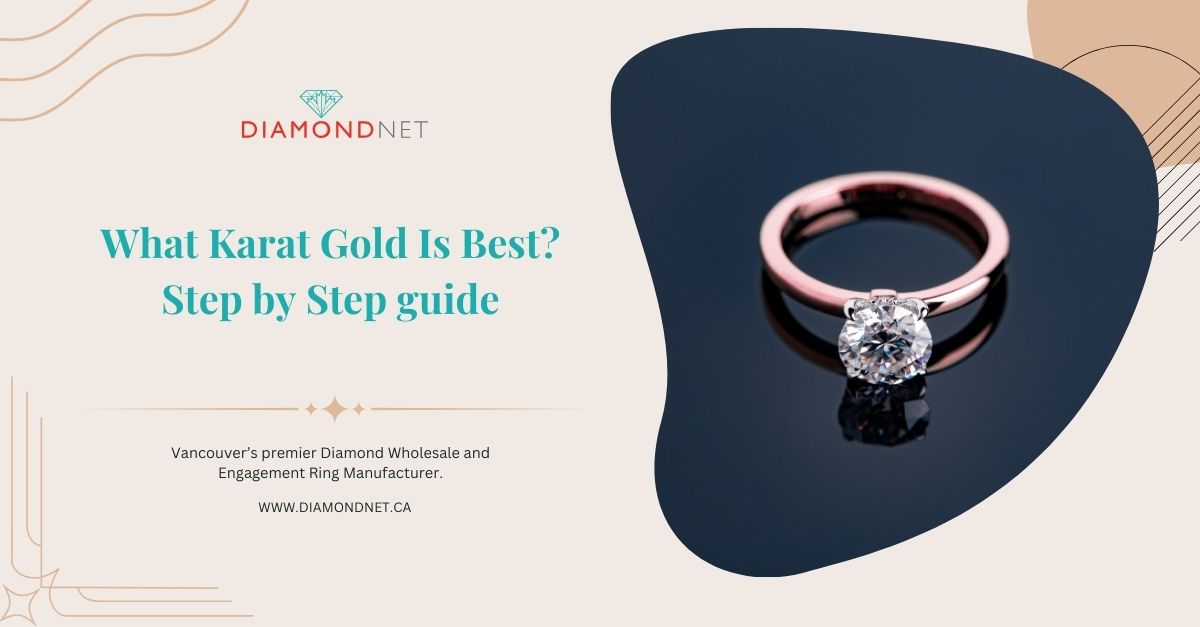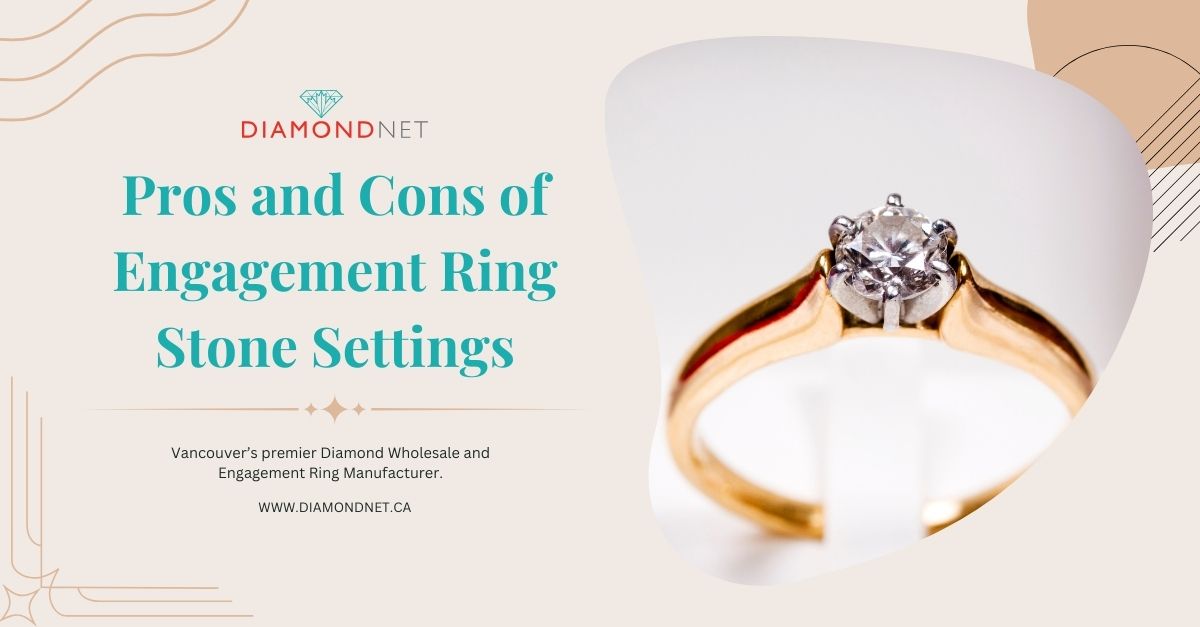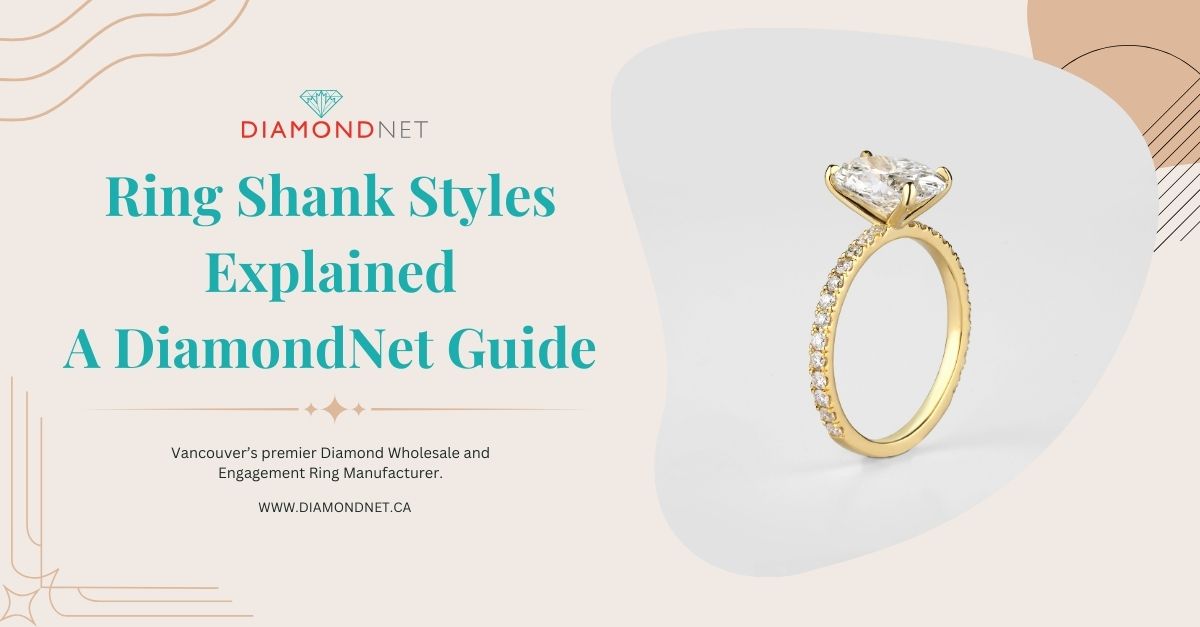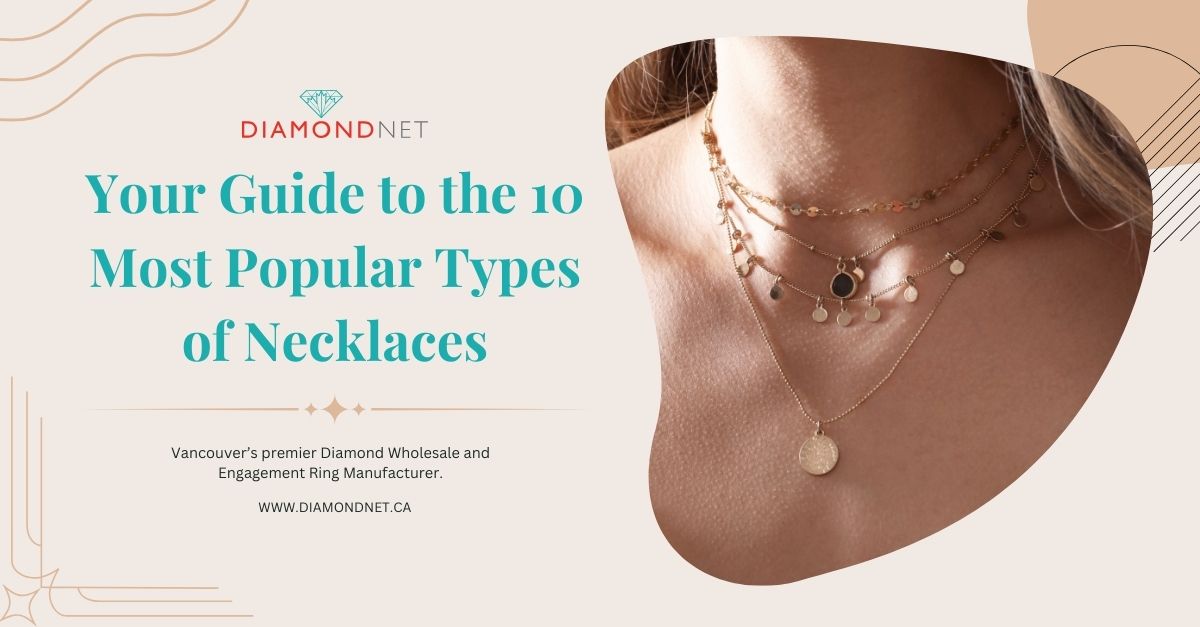Gold is timeless — but not all gold is the same. If you’re shopping for an engagement ring, wedding band, or a meaningful piece of jewellery, choosing the right karat matters just as much as the design.
Each karat level brings its own mix of purity, strength, colour, and cost. For some, the glow of 22K gold is irresistible. Others want 14K gold that handles daily wear without worry.
This guide breaks it down simply — step by step — so you can choose the best gold for your lifestyle, budget, and taste. And if you’re buying in Vancouver, we’ll show you how DiamondNet can help you compare your options with expert, pressure-free advice.
Here is the Quick Answer:
Not all gold is created equal.
- 10K is strongest and most affordable, ideal for fashion jewellery.
- 14K offers great durability and value for daily rings.
- 18K balances luxury and strength — perfect for engagement rings.
- 22K–24K deliver deep colour and value but require care.
Match your gold karat to your lifestyle, budget, and how you’ll wear the piece. For advice, visit DiamondNet’s Vancouver showroom.
Step 1: Essential Knowledge About Gold Karats
Before choosing the right gold for your jewellery, it’s important to understand what a karat actually means.
A karat (spelled “K” in Canada) refers to the purity of gold in an alloy. 24K gold is pure — 24 out of 24 parts gold. But pure gold is soft, which makes it less practical for rings, bands, or everyday wear. That’s why it’s often mixed with stronger metals like copper, silver, nickel, or zinc to improve durability.
Here’s how common gold karats compare by purity:
| Karat | Purity | Purity |
| 24K | 99.9% Pure | Bright Yellow, Softest, Not for Daily Wear |
| 22K | 91.7% Pure | Rich Colour, Still Soft, Best for Pendants |
| 18K | 75% Pure | Popular for Luxury Pieces and Fine Jewellery |
| 14K | 58.3% Pure | Most Durable for Daily Rings and Bands |
| 10K | 41.7% Pure | Affordable, Strong, Slightly Duller Tone |
The right karat isn’t just about the number. It’s about what the piece will go through — how it feels, how it wears, and what it represents.
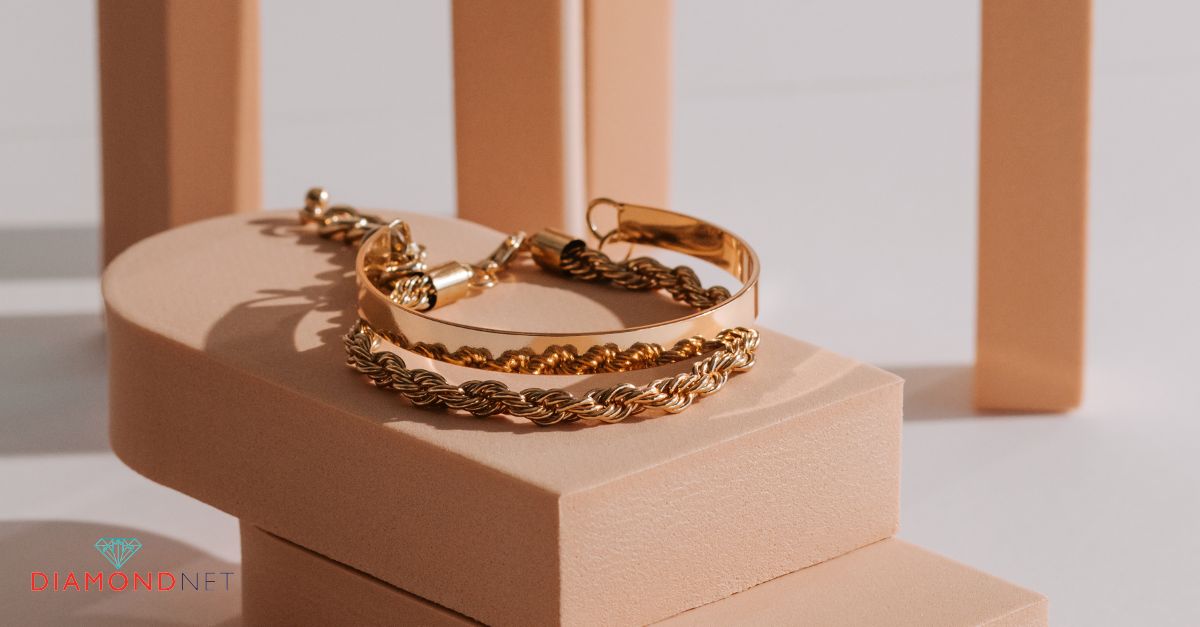
Step 2: Knowing Your Gold Karat Options
Each gold karat level has unique characteristics that affect how your jewellery looks, wears, and lasts. Here’s a breakdown of the most common types and what they’re best suited for:
24K Gold – Pure, Soft, and Radiant
Made of 99.9% gold, 24K offers an unmistakable rich yellow hue. But it’s also the softest. That means it’s ideal for heirloom pieces, collectibles, or special-occasion jewellery — not daily rings.
22K Gold – High Purity with Cultural Prestige
Containing 91.7% gold, 22K strikes a balance between colour and structure. Popular in many global traditions for wedding jewellery, it’s best suited for bangles, pendants, or earrings — less so for rings that face daily wear.
18K Gold – Luxury Meets Practicality
With 75% gold content, 18K is a favourite for engagement rings, wedding bands, and custom jewellery. It delivers warmth, richness, and enough strength to stand up to regular use — especially with proper care.
14K Gold – The Everyday Favourite
Containing 58.3% gold, 14K is one of the most practical options. It offers durability for active lifestyles while maintaining a soft gold glow. It’s an ideal pick for wedding bands, bracelets, and rings you never take off.
10K Gold – Strong, Affordable, and Subtle
At 41.7% gold, 10K is the most budget-friendly and hardest of the bunch. It resists scratches well, making it a solid choice for casual or fashion jewellery. Just note: the colour is paler, and it may not suit those looking for a classic gold look.
➤ When you’re comparing options, think beyond colour. Durability, skin sensitivity, and how you’ll wear the piece all come into play — and we’ll walk through those next.
Step 3: How to Choose the Right Karat for Your Jewellery
The right gold karat depends on how you’ll wear the piece, your personal style, and what matters most to you—whether that’s durability, appearance, or long-term value.
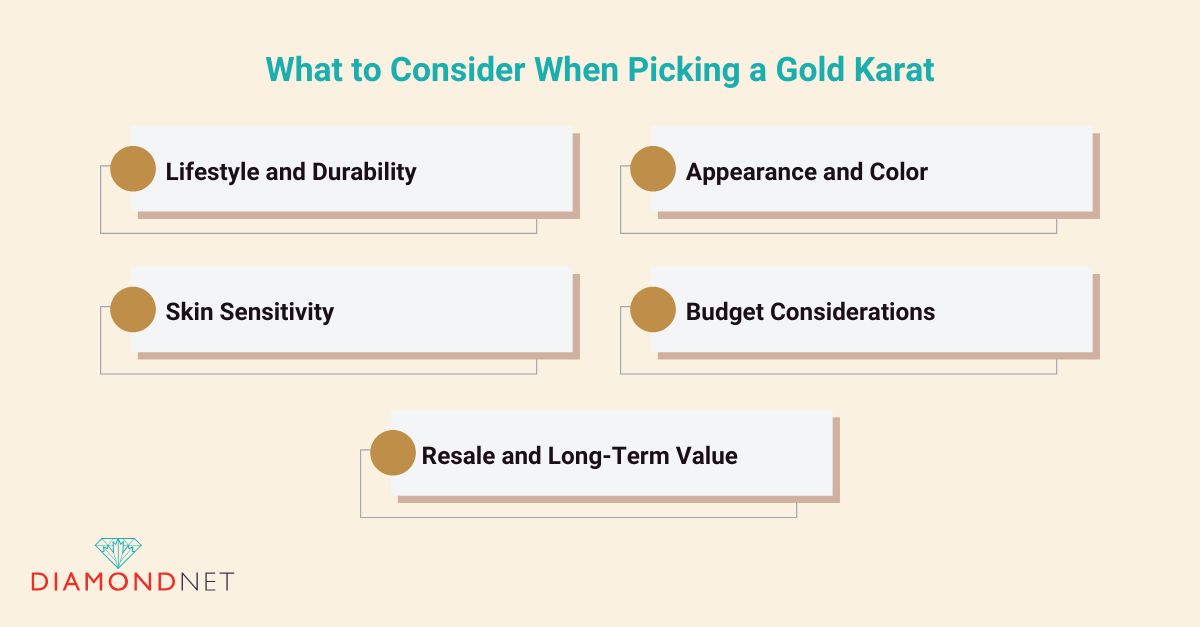
Lifestyle and Durability
If the piece is for daily wear—like a wedding band or engagement ring—look for karats that can handle impact and friction. 14K or 18K gold are ideal: they strike a balance between beauty and strength. 10K gold is even tougher but lacks the rich tone some buyers prefer.
Appearance and Colour
Higher-purity gold has a deeper, more saturated yellow. If you’re after that classic, warm glow, 18K or 22K will feel more luxurious. 14K offers a softer, more neutral tone—elegant, but less intense. Rose and white gold also shift slightly depending on the karat and alloy mix.
Skin Sensitivity
Some lower-karat alloys contain nickel or other metals that can irritate sensitive skin. 18K or 22K gold has fewer alloys and is generally safer for people with sensitivities. For white gold, always ask whether it’s nickel-free.
Budget and Practicality
10K and 14K gold are more affordable and durable, making them ideal for everyday pieces or for buyers prioritizing value. 18K and 22K cost more, but bring prestige and higher resale potential. It’s a trade-off between upfront budget and long-term worth.
Resale and Investment Value
Higher-karat jewellery—22K or 24K—typically holds its value better due to the gold content. That said, design quality, condition, and market timing also affect resale. If you’re thinking long term, purity plays a role, but it’s not the only factor.
Quick Comparison: Best Karat Based on Your Priorities |
||
| Priority | Ideal Karat | Why It’s a Good Choice |
| Durability | 14K or 10K | Withstands Daily Wear and Physical Activity |
| Rich Colour | 18K or 22K | Deeper Yellow Tone for Elegant Statement Pieces |
| Investment Value | 22K or 24K | Higher Gold Content Retains Long-Term Value |
| Budget-Friendly | 14K or 10K | Affordable and Practical for Everyday Use |
| Sensitive Skin | 18K | Higher Purity Reduces the Risk of Irritation |
Step 4: Considering Gold Colour Options
Gold isn’t just about purity. Its colour also depends on which metals it’s alloyed with. That’s why the same karat can look different depending on whether it’s yellow, white, or rose gold.
Yellow Gold
This is gold in its most traditional look. Higher-karat yellow gold (18K and above) delivers a rich, warm tone with a strong golden hue. It’s timeless and pairs beautifully with both classic and custom jewellery.
White Gold
Made by mixing gold with white metals like nickel or palladium, then often plated in rhodium for added brightness. It has a cooler tone that resembles platinum but at a more accessible price. 14K and 18K white gold are common in modern settings but may need re-plating over time.
Rose Gold
Copper alloys give rose gold its blush tone. It’s romantic and unconventional, making it a popular choice for unique or vintage-inspired designs. 14K rose gold is durable and has a soft, pink warmth that flatters many skin tones.
Note: Colour will vary slightly depending on the karat and the specific metal mix. If you’re choosing between tones, comparing them in person is the easiest way to spot the difference.
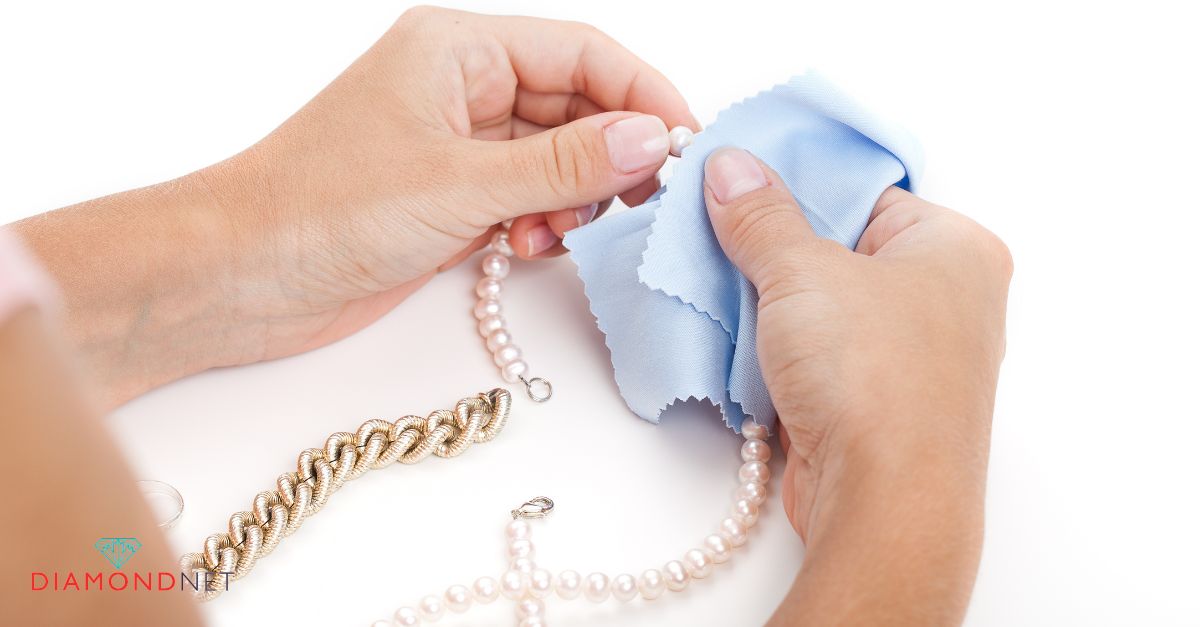
Step 5: Caring for Your Gold Jewellery
Gold jewellery is built to last, but it still needs thoughtful care—especially as karat levels affect softness and wear over time. Here’s how to protect your pieces based on their gold content.
24K & 22K Gold
These high-purity pieces are soft and prone to scratching. Wear them occasionally rather than daily. Store separately in soft pouches and clean gently with a polishing cloth.
18K Gold
Offers a solid balance of strength and beauty. Clean with mild soap and water, and polish occasionally to maintain shine. Store carefully to avoid contact with harder metals.
14K & 10K Gold
These karats are ideal for daily wear. They’re more resistant to scratches and dents. Regular cleaning with warm water and a soft cloth is usually enough. Avoid harsh chemicals and always check settings for loose stones.
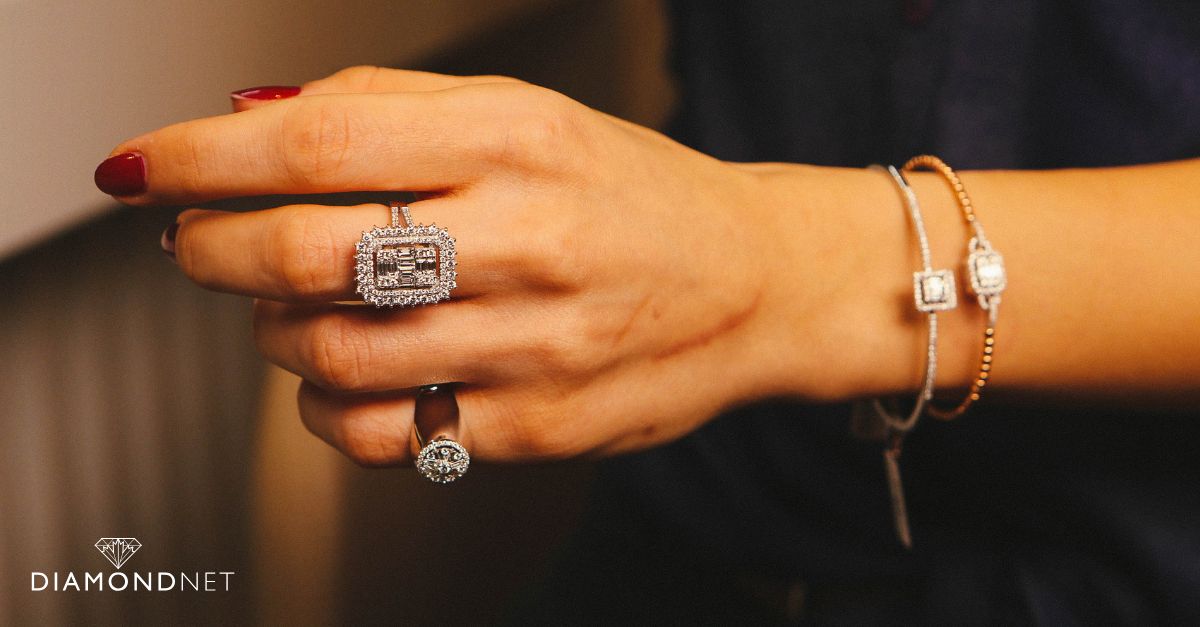
Universal Tips for All Karats
✔ Store pieces separately to avoid scratching.
✔ Remove jewellery before intense activity, swimming, or applying lotions.
✔ Inspect settings regularly, especially for rings and bracelets.
With the right maintenance, gold jewellery not only retains its lustre but also gains character over time.
Why Choose DiamondNet for Your Gold Jewellery
When it comes to meaningful jewellery—especially pieces like engagement rings or wedding bands—the right karat is only part of the story. Choosing where you buy matters just as much.
At DiamondNet’s Vancouver showroom, we offer more than selection; we offer expertise.
✅ We listen. Whether you’re after the elegance of 18K, the everyday strength of 14K, or want to understand the difference in person, our team helps you make informed, pressure-free decisions.
✅ We design. If you’re considering a custom piece, we’ll guide you through karat choices, metal colours, and finishes that fit your lifestyle and design vision.
✅ We stand by quality. Our gold is certified, carefully sourced, and crafted for both style and durability—whether you’re shopping for a new heirloom or something you’ll wear every day.
Gold is more than a material. It’s a commitment. And at DiamondNet, we make sure that commitment feels as lasting as the piece itself.
Final Thoughts
There’s no one-size-fits-all answer when it comes to choosing the best gold karat. The right option depends on how you’ll wear it, your style preferences, and what you want the piece to represent.
- For everyday rings like wedding bands or engagement rings, 14K or 18K gold delivers the right mix of strength, comfort, and elegance.
- For special occasion jewellery, 22K or 24K offers rich colour and timeless beauty.
- For budget-friendly fashion pieces, 10K gold provides maximum durability at a lower cost.
Understanding how gold karats affect durability, tone, and value helps you make a confident, long-term investment in your jewellery.
Still unsure? Visit DiamondNet’s Vancouver showroom to compare karats side by side and ask any questions. Prefer a more personal approach? Schedule a one-on-one consultation to get expert guidance at your pace.
The best gold is the one that fits your life—and feels like it was made for you.
